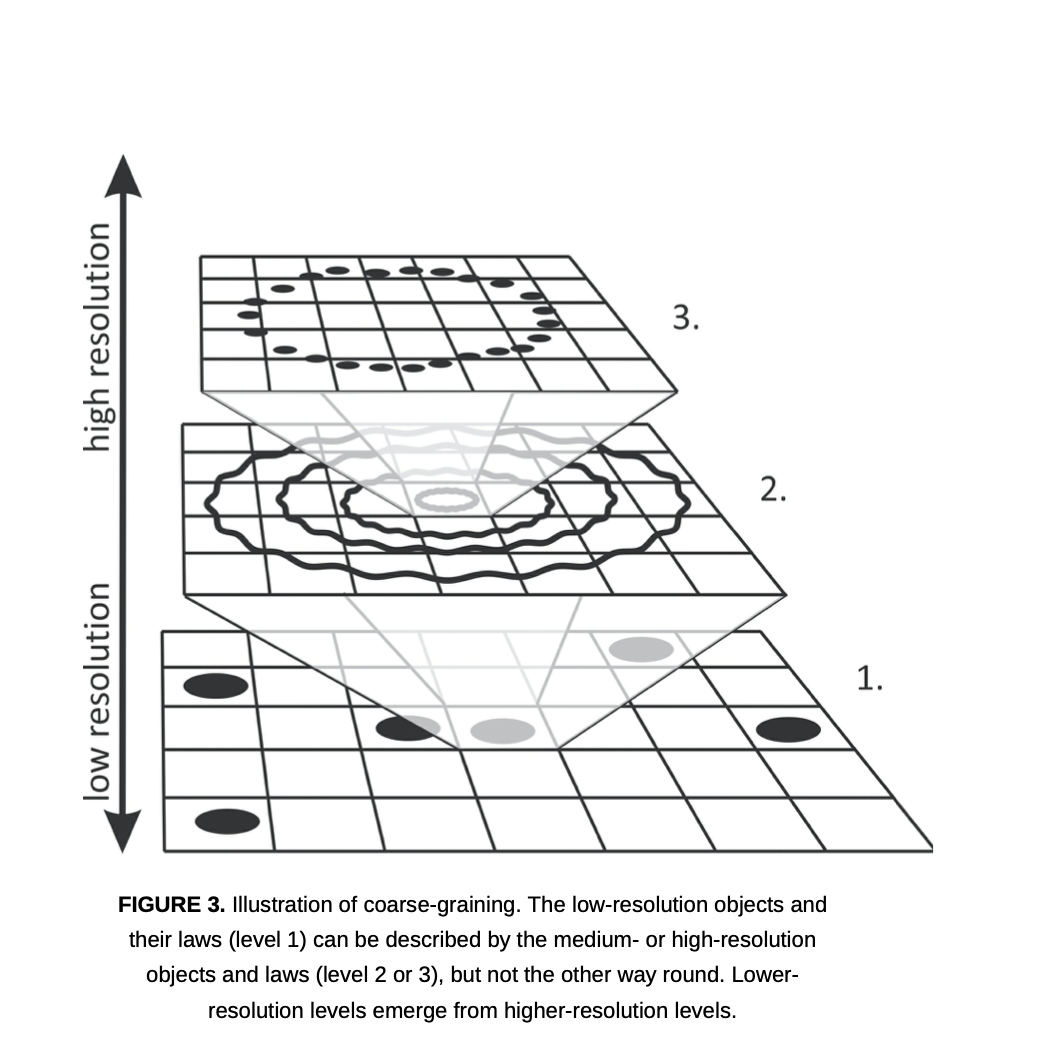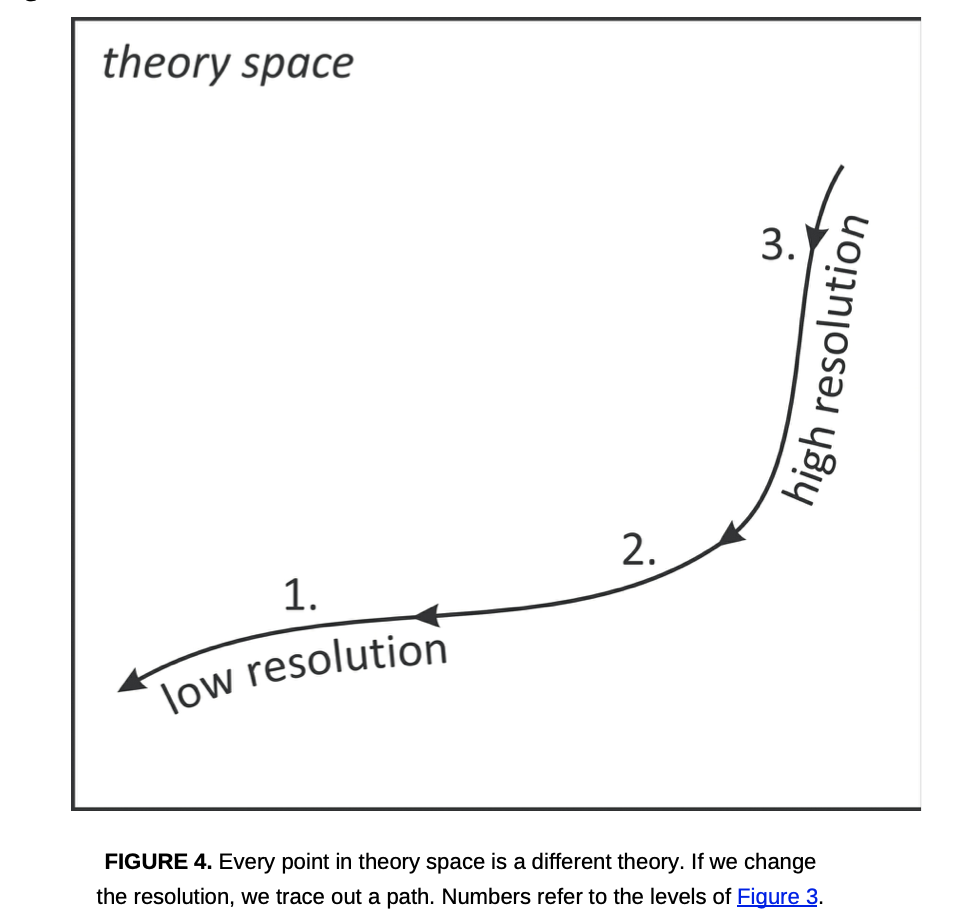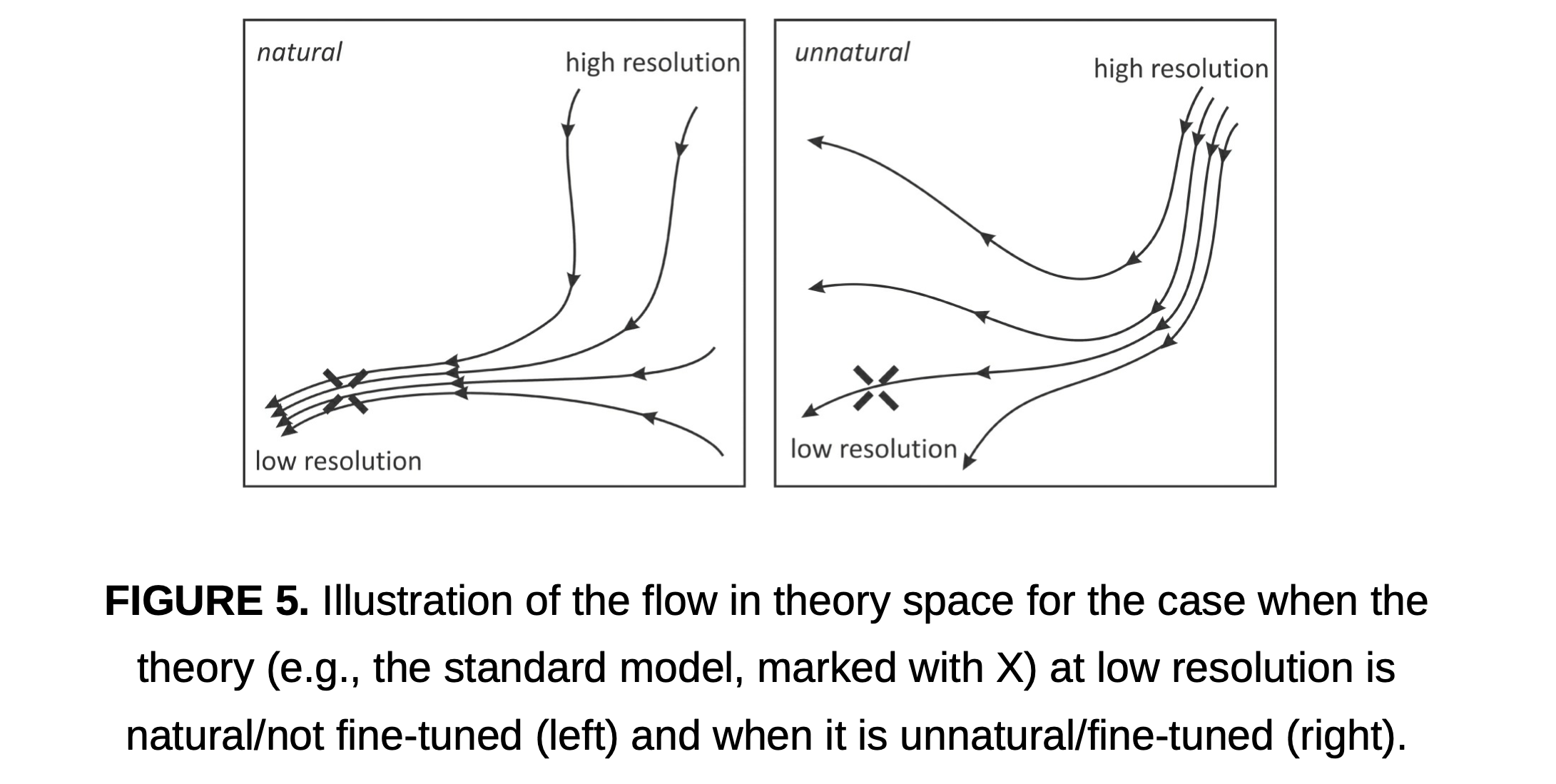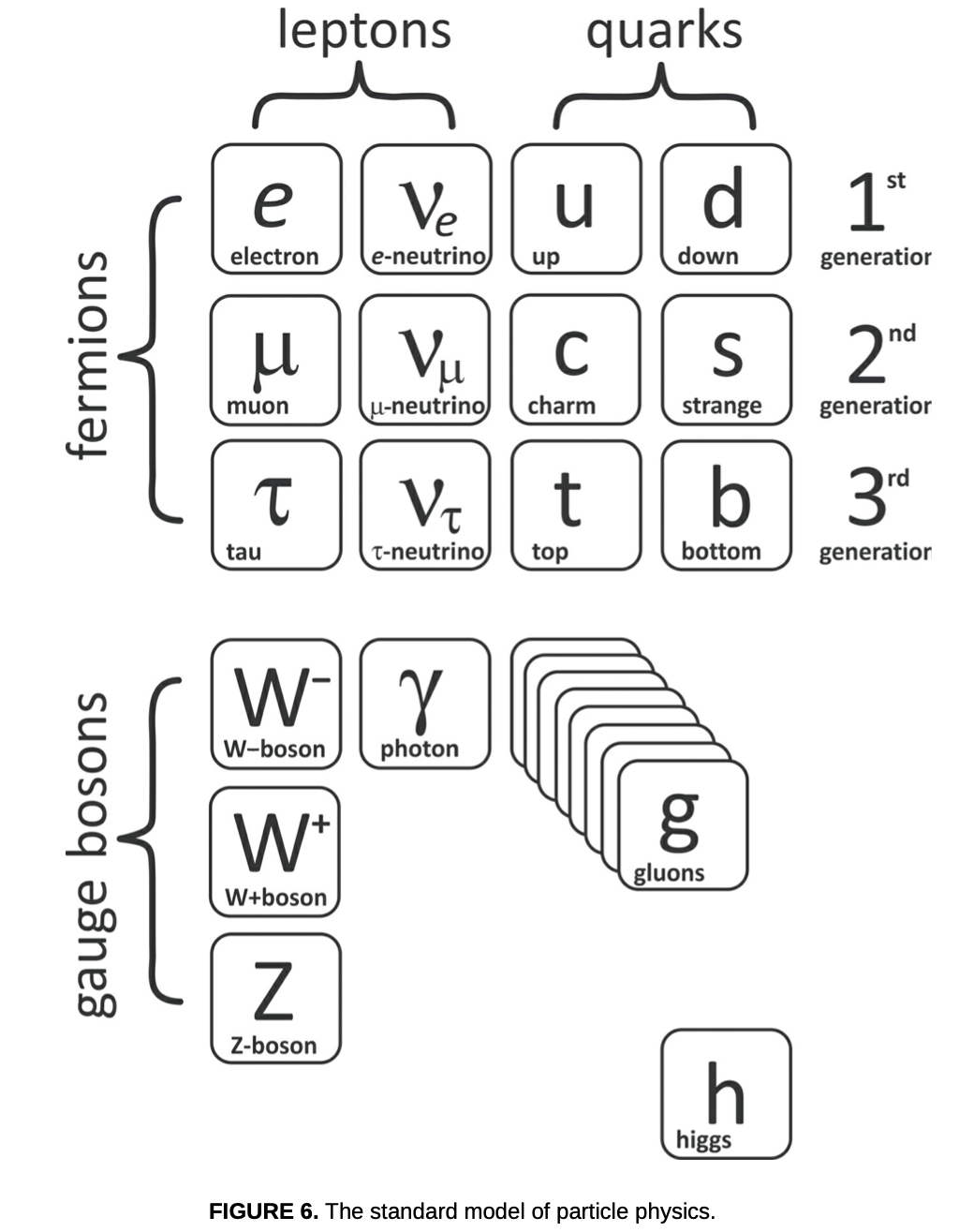Physics Lournal
Powered by 🌱Roam Garden3. The State of The Union
We say that the short-distance physics decouples from physics at larger distances- the scales separate.
Resolution dependent objects and their properties are emergent.

Relating short-distance physics to large-distance physics is coarse-graining.
Every theory is assigned a point in theory space, and and the connection between them through resolutions is called the flow of the theories.

In theory space, Naturalness means a low level theory shouldn't sensitively depend on a high level theory.
We should be able to start at any high level theory, and work our way down to the standard model, but if we have to pick a certain theory at high resolution in order to get to the standard model, then we have to fine tune the start.

In order to observe at the smallest level, we must first acquiesce to Quantum Mechanics, as we cannot focus light, at particles, as light and particles are neither waves, nor particles, respectively- so we are forced to work with Wave Functions, which have properties of both categories of materia.
Wave Functions themselves do not represent any existing quantity, but from calculating one, we can generate the likelihood that some physical entity is observable.
Quantum Mechanics also reveals that the heavier some wave function related observable is, and the faster it moves, the smaller it's wave length.
The reason particle accelerators are used is because the use of electric and magnetic fields to focus and speed up beams with particles, is that the resulting collision releases a level of energy results in something fine enough to probe the smaller distances between constituents of electrons.
The problem here is that, as the particles gain speed, the measurement is harder to gain information from- at sufficiently high energy, the targets of particle beams are destroyed, and thus the information of what took place, is scattered in the debris.
At the highest energy levels, physics don't shoot particles at targets, but rather particles at particles (beams at beams).
The higher the energy level of the collision, the smaller distances it allows us to see into.
Built upon a concept known as Gauge Symmetry.
According to this theory, each particle has a direction, in some internal space, and what we call gauge symmetry demands invariance under the labels used to mark that space.
Very much like a change in walking direction alters a compass, a change in a particles internal space, would change the type of particle- however, if this transformation happens under a symmetry, the physics of the particle should not change.
For instance, a certain transformation in the internal space of an electron results in measurements that correspond with neutrinos.
Because properties of internal space, can change through time and space, this symmetry is difficult to fulfill, but via mathematics we can see that interaction between symmetric particles must be mediated via other particles, whose properties are determined by the type of symmetry involved, calledGauge Boson's.

The standard model is a Quantum Field Theory, which by field, simply indicates that there's a value for every point in space, and moment in time, and the quantum, indicates that what is really being described by the field, are particles, which are quantum in nature.
The field, in turn, allows you to figure out how likely it is that a particle can or will be found in a given place, at a given time.
Additionally, the standard model uses Einsteinian symmetries from Special Relativity.
According to Einstein, space and time combine into a four-dimensional space time, where space and time are equals, meaning:
Changes in spatio-temporal measurement can not effect laws.
Rotations in space must not affect them either
They must be unaffected by generalized rotations in space time.
A space time rotation is simply a change in velocity.